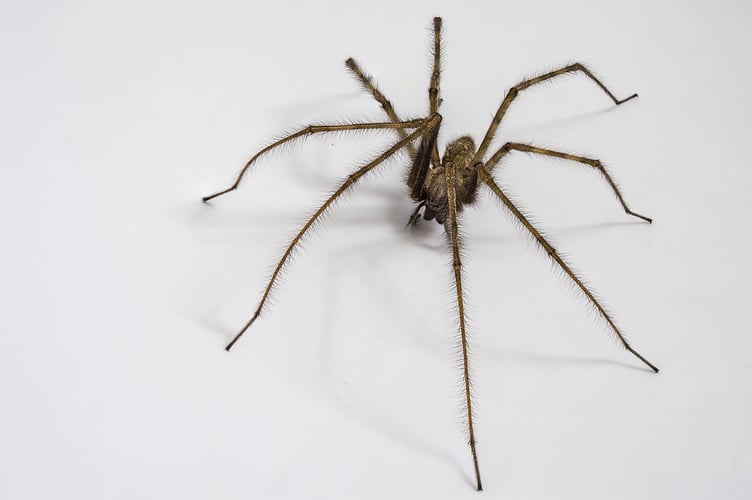Spider mating season is upon us!
We have more than 650 species of spider in the British Isles, but the ones that we tend to come across most are the orb-weaver spider, which mostly lives outside, and the house spider.
Both of these species enter their mating period at this time of year, making the males in particular more active and therefore more visible (80% of the house spiders you see at this time of year will be male).
When the male finally finds a female, he will mate with her numerous times over the space of a few weeks until eventually dying and being eaten by the female.
The females can live for several years.
According to research, 7.35pm is the most likely time to see a spider on the go during the mating season, followed by 6am.
But rather than dread an encounter with a spider, we should welcome them for various reasons.
They can’t hurt you for a start. The vast majority of spiders here pose no threat to humans.
Only 12 species could bite you, just two or three can cause significant pain, and none will cause any long-term harm.
The Eratigena and Tegenaria species, to give the house spider its correct names, have venomous fangs with which to kill their prey, but even the largest spiders do not have jaws strong enough to pierce human skin.
At the very worst they may nip a human finger.
Spiders are also a sign of environmental ‘health’ because they prey on other insects and the use of pesticides, combined with our ever-changing weather patterns, has had an adverse effect on numbers.
So, the more spiders you see, the healthier your environment. They are also good pest controllers, and they kill and consume many types of insects, including:
•Clothes moths and their lava (that may be about to ruin your most expensive coat or curtains)
•Houseflies (that carry 41 human diseases which they will readily transmit to our food and to our kitchen worktops)
•Fleas (that will make your life a misery if they live in your carpets, and keep re-infesting your pets).
Sadly, people all too often think it’s OK to vacuum up a house spider or smother it with hairspray or furniture polish, leading to a pretty miserable death.
But did you know that using the ‘beer glass and card’ technique and putting a house spider outside may also kill it?
Releasing a house spider into the cold is almost certainly a death sentence because they have adapted over the centuries to indoor conditions – a steady climate, specific food types, and sparse water supplies.
So, if you see a house spider and your first reaction is ‘get rid of it’, please think again.
Sometimes they actually need our help – if they fall into a bath tub or a kitchen sink, they can’t scale up the smooth sides, and so you should create a make-shift ladder out of some toilet paper or a tea towel. Many people think that spiders climb up drains and put a plug into their bath or sink, but U-bends prevent this and it is much more likely that the spider had dropped down from above, in pursuit of water.
But if you really can’t overcome your fear of spiders, then consider using some deterrents so that there’s less likelihood that you will encounter one.
Spiders are drawn to clutter and mess, where they can hide without disturbance, and so keep your house tidy and use a feather duster to keep on top of cobwebs.
There are also good natural repellents that spiders don’t like such as citrus, mint and cedar wood.
Put these oils at entry points to your home such as windows, and any crevices you may have in floor or skirting boards.
It’s important to find a balance between keeping spiders at bay and maintaining a healthy environment – better still, work on overcoming an irrational phobia.



-(1).jpeg?width=209&height=140&crop=209:145,smart&quality=75)
.jpg?width=209&height=140&crop=209:145,smart&quality=75)
Comments
This article has no comments yet. Be the first to leave a comment.